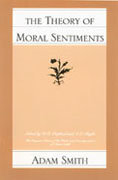Question
1. Answer the following using the production function F(L, K) = L 1/2 K 1/2 , input prices fixed at w =4 and v =
1. Answer the following using the production function F(L, K) = L1/2K1/2, input prices fixed at w =4 and v = 9. There are two different types of firms. Big firms have SR capital fixed at 144, and small firms have SR fixed capital of 64.
a) Show that for the big firms with K = 144 SCb(q) = q2/36 + 1296 and for the small firms with fixed capital of 64, SCs(q) = q2 /16 + 576. Use this to find SMCb(q) and SMCs(q)
b) Show that if the market demand is QD=-1900P + 41040, there is a LR competitive equilibrium with 40 big firms with a fixed capital of 144 and 100 small firms with a fixed capital of 64.
c) What does the fact that firms of different sizes can co-exist in LR equilibrium tell us about the production function? Can you verify that conclusion from the production function?
d) Show that the LR number of identical firms large firms (K=144) is 84 and this makes the LR price a little bigger than the price in (b).. Explain why "Reality" prevented us from getting the same price as in (b).
e) Show what happens to price, market output, and firm profit in the short run with 84 large firms if the market demand changes to QD = -1500P + 30960.
f) If this is a constant cost industry, find the LRCE market Q, and number of identical large firms. Explain why these numbers make sense when compared with (a).
g) Now assume that, instead of a constant cost industry, the change in demand now changes the input prices to w = 3.8 and v = 8.55. Find the new SC(q), MC(q) for large firms and use these to find the new LR equilibrium price, market Q and number of firms. Explain whether this is an increasing or decreasing cost industry and how your answers here then make sense when compared to (f).
Step by Step Solution
There are 3 Steps involved in it
Step: 1

Get Instant Access to Expert-Tailored Solutions
See step-by-step solutions with expert insights and AI powered tools for academic success
Step: 2

Step: 3

Ace Your Homework with AI
Get the answers you need in no time with our AI-driven, step-by-step assistance
Get Started


